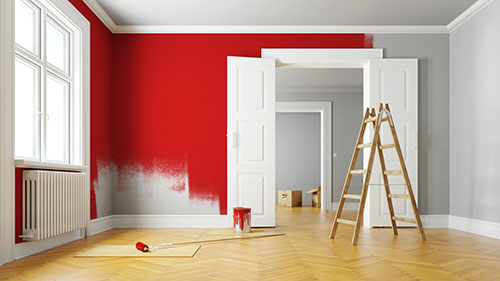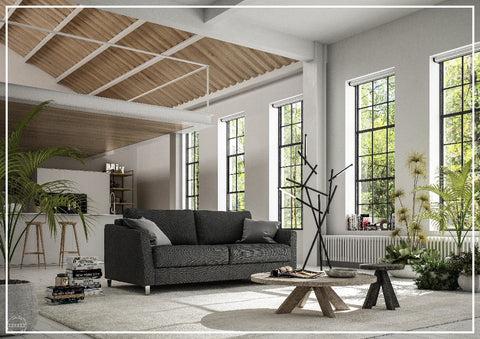It was a crisp autumn morning when Jeff decided to tackle a minor roof repair he had been putting off for weeks. Armed with a basic extension ladder, he climbed up to check a loose shingle on the edge of his roof. But as he gingerly stepped onto the roof’s surface, he felt a sudden slip underfoot. The angle was steeper than anticipated, and his regular ladder wasn’t offering the security he needed to move safely across the roof. His heart pounded as he scrambled to regain his balance. Shaken but unharmed, Jeff climbed down and realized that his makeshift approach wasn’t just risky—it was dangerous. After researching the proper tools that evening, he purchased a roof ladder. The next time he went up, the experience was entirely different—stable, secure, and safe. A task that once felt precarious was now efficient and controlled, all because he had the right equipment.
For homeowners like Jeff, working on a roof can be daunting, but it’s also a task that many undertake without fully considering the risks. Whether it’s cleaning gutters, repairing shingles, or installing a satellite dish, the safety and efficiency of roof work are directly tied to the tools used. Roof ladders, specifically designed for this purpose, are critical to ensure these tasks are done safely. In this article, we’ll explore what roof ladders are, how they differ from traditional ladders, the types available, the safety features they offer, and why they’re essential for any roof-related task. Additionally, we’ll delve into statistics on ladder-related accidents and why investing in the right roof ladder can make all the difference.
- What is a Roof Ladder?
A roof ladder, sometimes called a cat ladder, is a specialized type designed for safe use on sloped roofs. Unlike traditional extension ladders, which rest against the side of a building, roof ladders have hooks at the top that latch onto the ridge of the roof. These hooks secure the ladder in place, preventing it from sliding down or slipping as the user moves across the roof.
Roof ladders are handy for tasks that require more movement on the roof’s surface, such as inspecting chimneys, fixing leaks, or maintaining solar panels. By distributing the user’s weight evenly and providing a stable platform, roof ladders reduce the risk of damaging the roof or falling.
The primary advantage of roof ladders is their ability to stay securely in place on sloped roofs, which are inherently more dangerous to navigate. A roof ladder offers a stable platform, allowing users to walk across the roof without directly stepping on shingles or tiles, thus minimizing the risk of slips, damage to the roof, or worse—accidents.
- Types of Roof Ladders
Several roof ladders are suitable for different tasks and roof types. The key is to select a ladder that fits the slope and material of your roof and the specific job you’re performing.
a. Single-Section Roof Ladder
This is the simplest type of roof ladder, consisting of a single section with hooks at the top. The ladder is hooked over the ridge of the roof and rests flat against the roof’s surface. Single-section roof ladders are easy to set up and lightweight, making them ideal for quick tasks such as inspecting a chimney or repairing a few shingles. However, they offer limited reach, so they may not be suitable for larger roofs.
b. Extension Roof Ladder
An extension roof ladder offers more flexibility by extending to reach different areas of the roof. These ladders are ideal for larger roofs or tasks requiring movement across a broader roof section. Although they are heavier and more complex to set up, they provide the advantage of adjusting to different lengths, making them versatile for various tasks.
c. Combination Ladders
Combination ladders can function as extension and roof ladders, offering versatility for different jobs. They can be used as standard ladders to access the roof and then converted into roof ladders by hooking onto the ridge. This eliminates the need for multiple ladders, making combination ladders a convenient choice for homeowners or contractors who perform various roof-related tasks.
d. Telescopic Roof Ladder
Telescopic roof ladders are designed to be highly portable and easy to store. They collapse into a compact size, making them perfect for people with limited storage space. These ladders are handy for contractors or roofers transporting equipment between job sites. Although they are made from lightweight materials such as aluminum, they still provide the necessary strength and stability for roof work.
- Safety Features and Benefits of Roof Ladders
Roof ladders are designed to make roof work safer by addressing the challenges of working on sloped, slippery surfaces. The critical safety features of roof ladders include:
a. Roof Hooks
The roof hooks at the top of a roof ladder secure the ladder to the ridge, preventing it from sliding or shifting as the user moves across the roof. This is particularly important on steep roofs, where slipping is a significant hazard. Roof hooks are typically adjustable to fit different ridge sizes, ensuring a secure fit for any roof.
b. Non-Slip Rungs
Roof ladders often feature non-slip rungs, which provide additional traction for the user’s feet. These rungs are designed to minimize the risk of slipping, even in wet or icy conditions. The non-slip rungs also help distribute the user’s weight more evenly, reducing the pressure on individual shingles or tiles and minimizing the risk of damaging the roof.
c. Lightweight Materials
Most roof ladders are made from lightweight materials such as aluminum, making them easy to maneuver while sturdy enough to support the user’s weight. This balance between strength and weight is critical, as a ladder that’s too heavy can be difficult to position and more dangerous to move once it’s on the roof.
d. Weight Distribution
One of the main benefits of a roof ladder is that it distributes the user’s weight across multiple rungs rather than concentrating it in one spot. This makes it safer for the person using the ladder and reduces the risk of damaging the roof. By spreading the weight evenly, roof ladders help protect delicate roofing materials, such as tiles or shingles, from cracking or breaking under pressure.
- The Importance of Safety When Using Ladders
Ladders, mainly when used on roofs, are among the most common sources of accidents in home improvement projects. According to the Occupational Safety and Health Administration (OSHA), falls are the leading cause of injury in construction, with ladder-related falls accounting for a significant portion of these incidents. 43% of fatal falls in the construction industry involve a ladder.
The statistics for homeowners are equally alarming. The Centers for Disease Control and Prevention (CDC) reports that more than 500,000 people are treated for ladder-related injuries each year in the U.S., with approximately 300 deaths. Many of these accidents could be prevented with the proper use of safety equipment, such as roof ladders explicitly designed for roof work.
Roof ladders significantly reduce the risk of slipping and falling, which is common on steep, wet, or icy roofs. By using a ladder with the appropriate safety features—such as non-slip rungs and secure roof hooks—homeowners can perform routine maintenance tasks like gutter cleaning, roof inspections, and minor repairs without putting themselves in unnecessary danger.
- Choosing the Right Roof Ladder for Your Needs
Selecting the right roof ladder depends on several factors, including the size and pitch of your roof, the type of work you’re doing, and how often you plan to use the ladder. Here are a few key considerations:
a. Roof Pitch
If your roof has a steep pitch, you’ll need a ladder that can securely hook onto the ridge without slipping. Ensure the ladder’s roof hooks are adjustable and designed for sloped roofs.
b. Length of the Ladder
Consider the size of your roof and whether a single-section ladder will provide enough reach. An extension roof ladder may be a better choice for larger roofs or multi-story homes, as it can be adjusted to reach different areas without needing multiple ladders.
c. Frequency of Use
If you plan to use the ladder frequently, investing in a high-quality model with durable materials and safety features is essential. If you only need a roof ladder for occasional use, a lightweight, portable option like a telescopic ladder might be more practical.
- Cost of Roof Ladders
The cost of a roof ladder can vary depending on the type and material. Essential roof ladders typically start at around $100, while more advanced models, such as telescopic or extension ladders, can cost upwards of $300 or more. While this may seem like a significant investment, it’s essential to consider the cost of a ladder relative to the potential risks of not using the right equipment. The price of a roof ladder is a small fraction of the cost of a hospital visit or roof repair caused by a fall.
Conclusion: Safety First with the Right Roof Ladder
A roof ladder is an indispensable tool for anyone who needs to perform work on a roof—whether it’s cleaning gutters, repairing shingles, or inspecting vents. Jeff learned in his story that using a regular ladder can be risky, but a roof ladder explicitly designed for sloped surfaces provides the stability and safety required for these tasks.
With features like roof hooks, non-slip rungs, and lightweight materials, roof ladders offer the peace of mind that comes with knowing you’re working in the safest possible.


















